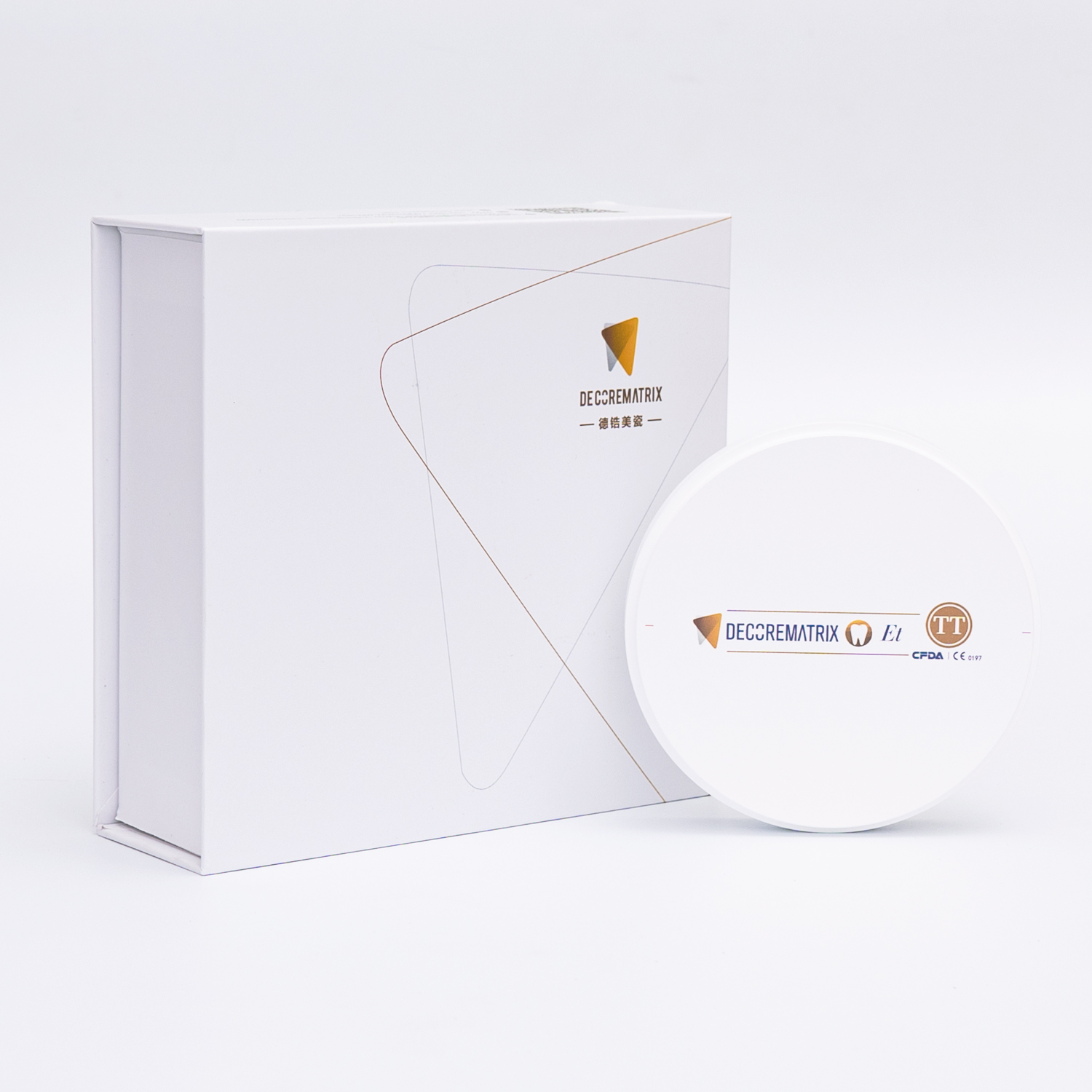Ceramics is a strong material that can be used in a large number of applications, including the healthcare industry. In dental clinics, ceramics are a valuable material for performing dental restorations, such as prostheses, which can help fill gaps caused by lost teeth and other dental applications. Zirconia ceramics is a strong type of ceramic that is great for stopping crack growth and can be used as a framework material too. Let’s take a look at the advantages of Zirconia ceramics.
Common Types of All-Ceramics
According to the ratio between glass and crystal, all-ceramic material can be divided into the following 3 diagrams.
- Feldspathic porcelain:a highly translucent, esthetic material for restorations fabricated with the traditional veneering porcelain powder and liquid brush buildup technique. It has the highest similarities to human teeth in terms of texture and color. On the other hand, it is the weakest restoration material and can work specifically in teeth still with enamel.
- Dental glass-ceramics:Glass-ceramics consisting of various oxide crystals in a matrix of siliceous residual glass offer properties that are not available with more common silicate crystals. The crystal material has a better mechanical and optical performance.
- Polycrystalline ceramic: the all-ceramic material is a composite whose property reflects the properties of its constituents: grains and grain boundaries. It comes with a higher strength but lower translucency.
Then the dental restoration materials witnessed a great development, the advent of zirconia ceramics and DGCs with higher translucency and strength challenged the division, and the feldspathic porcelain, purely natural ceramic, was transformed into ceramic composites. Nowadays, this kind of dental material composes of the:
- Glass-matrix ceramics
- Polycrystalline ceramics
- Resin-matrix ceramics
Despite the growth of resin-matrix ceramics, zirconia ceramics, a kind of polycrystalline ceramics, enjoys wider applications in clinics, including manufacturing artificial hit joints and prosthodontics.

Zirconia Structure and Features
Some materials in a dental clinic are safer and more durable than others, and this is one area where Zirconia comes into the picture. Zirconia ceramics are some of the strongest options available, especially when looking at a ceramic in particular. This also means they have the most extended lifespan.
Since Zirconia is also free of toxins and not prone to causing allergic reactions, it is also considered a safer material to use in a dental setting, thanks to its biocompatibility.
The translucent design of Zirconia also means they can easily blend with the existing parts of the patient’s dental cavity – which is an essential factor to consider when it comes to aesthetics. Patients want any work done on their teeth to seem natural and contribute to a better smile, so dentists have to focus on the aesthetic part of their work too. This also makes Zirconia more adaptable to the individual’s specific requirements.
Zirconia Ceramics Clinical Applications
There are numerous areas where Zirconia ceramics and Zirconia blocks can be used in a dental clinic. It is common to see Zirconia used for porcelain veneers, mainly due to the strength that this material offers. In dentistry, zirconia ceramics is mainly applied in the following ways:
- Porcelain veneer
According to a 5-year follow-up research, the survival rate of zirconia restoration is up to 95.3% after one year and 80.2% two years later, which houses the best performance among all the dental materials in the known.
- Post-core crown
As a result of 5-year follow-up research of the zirconia crown owners, the survival rate was 98% after 5 years. Zirconia ceramics have better biocompatibility, opacity, flexibility, and mechanical strength. The zirconia ceramics for restoration has a better preservation of the body and colors of teeth than other materials.
- Ceramic implant
Zirconia ceramic implant has lower surface free energy and surface wettability, which will reduce bacterial adhesion and protect the implant from underlying diseases.
De Corematrix’s Zirconia Block Options
De Corematrix specializes in developing high-quality Zirconia ceramics in the form of blocks. These blocks can then be used for a large number of potential dental applications in a clinical setting.
Each Zirconia ceramics block option from De Corematrix offers specific usage options. Here, we take a closer look at some of the top-rated Zirconia ceramics that are available from this supplier:
- De Corematrix HT: One of the best options, this one offers superior levels of strength. It’s also a transparent option that can be adjusted in terms of opaqueness based on the patient’s teeth.
- De Corematrix ST: Another durable option that is also stylish. It is a good choice when the patient worries about how any dental work done to them would affect the aesthetics of their teeth and smile. This particular Zirconia ceramics block can be used in the manufacturing of bridges.
- De Corematrix ML: The 900 MPa grading of these Zirconia ceramics offers exceptional strength to ensure it lasts a lifetime. It’s also a 46% transparent option that can be effectively modified to suit the patient’s specific needs in terms of aesthetics.
- De Corematrix 3D Pro: The layered structure of the Zirconia ceramics helps to not only contributes to its strength but also uses a gradient to assist in producing a more natural look.

Conclusion
De Corematric has produced top-quality Zirconia blocks and related dental products since 2016. The company offers a wide range of dental solutions that can improve the options you can provide your clients in the office. To learn more about the Zirconia plates or request a quotation, visit De Corematrix’s website for details.
References
https://www.ncbi.nlm.nih.gov/pmc/articles/PMC3010023/
https://pubmed.ncbi.nlm.nih.gov/21197939
https://www.icoi.org/glossary/feldspathic-porcelain/
https://www.sciencedirect.com/topics/chemistry/glass-ceramic
http://www.recentscientific.com/sites/default/files/3847_1.pdf
https://pubmed.ncbi.nlm.nih.gov/33041280/
https://www.kruss-scientific.com/en/know-how/glossary/surface-free-energy



